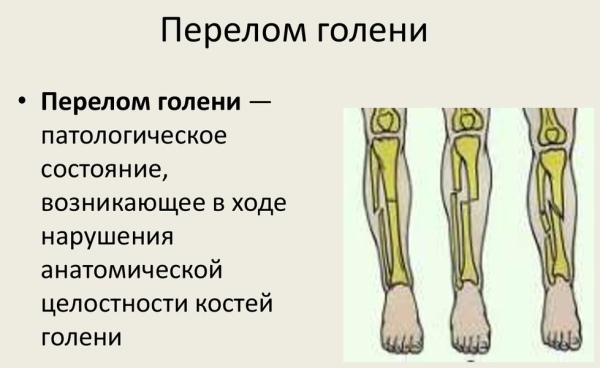Ankle fracture is violation of the integrity of the bone formation of the distal tibia. One of the important stages on the road to recovery is the process of home rehabilitation. Fast and successful restoration of motor functions depends on its success.
Record content:
- 1 Views
- 2 Stages and degrees
- 3 Symptoms
- 4 Reasons for the appearance
- 5 Diagnostics
- 6 When to see a doctor
- 7 Prophylaxis
-
8 Rehabilitation
- 8.1 Schedule
- 8.2 Medications
- 8.3 Traditional methods
- 8.4 Other methods
- 9 Possible complications
- 10 Ankle fracture video
Views
Complete or partial disruption of the integrity of the ankle joint is a common injury.
Ankle or ankle is a complex bone formation, in which they are distinguished:
- lateral (outer) malleolus or lower end of the fibula;
- the medial (inner) malleolus, which is the process of the lower tibia.
Both ankles form an ankle fork. This section bears the main load when transferring weight from a person to the foot.
The most common types of injury are:
- Fracture of the fibula. The most common type, which is more often treated without surgery, but it is important to ensure the stability of the ankle.
- Shin fracture. This disorder of the inner side of the joint occurs in the bone at the end of the lower leg called the medial malleolus. An isolated medial ankle fracture is much less common than an isolated lateral fracture. Typically, a displaced fracture of the middle ankle is treated with surgery.
-
Fractures of both the tibia and fibula. They occur when there is injury to both the inside and outside of the ankle. These injuries always destabilize the ankle and surgery is recommended in this case. Incorrectly fused bones in this case can lead to the development of arthritis. Sometimes surgical treatment will damage the cartilage of the ankle, which also leads to a high likelihood of developing arthritis.

- Ruptured ligaments on the inside of the ankle and fracture of the fibula. This leads to ankle instability and requires surgery.
- Fracture of the tibia. This is a rare isolated injury to the posterior ankle. The damage is usually found in connection with a breakdown in the integrity of the fibula.
- Fracture of the tibia and fibulawhen injury occurs on the inner side of the ankle (medial portion) while the lateral ankle is intact. In this case, the injury passes through the large ligament that connects the two bones of the leg. Because of damage to this supporting ligament, the ankle is unstable and most often requires surgery.
Stages and degrees
Ankle fracture (home rehabilitation should be carried out under the supervision of a physician) is classified according to the principle of construction into 2 groups. The first takes into account the anatomical picture of the damage. The second takes into account the mechanical force under the influence of which the injury occurred.
The classifications based on the mechanism of damage include:
- fracture of the ankle under the influence of direct traumatic force;
- fracture from the indirect effects of traumatic force.
Doctors often classify tibial fractures into the following categories: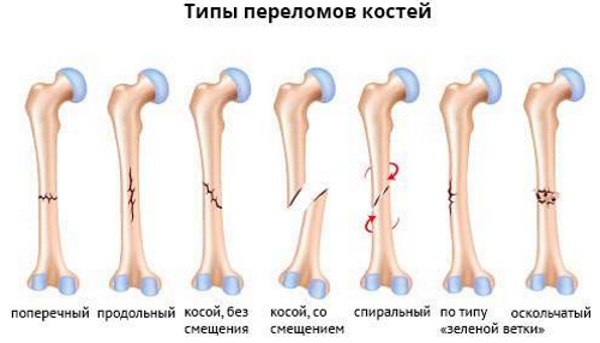
| Fracture type | Description |
| stable | The broken ends of the shin line properly and stay in place during the healing process. |
| transverse | The fracture is horizontal and the bone may become unstable if the fibula is also broken. |
| displaced | The shin moves when it breaks. The broken ends of the bone are separated from each other and do not line up. This type of fracture is quite serious and may require surgery for full recovery. |
| oblique | The fractures of the bones are angled and fairly stable. It can become more misaligned over time, especially if the fibula is also broken. |
| fragmented | The bone is broken into three or more separate pieces. This is the most unstable and most severe type of shin fracture. |
| spiral | This tear, often caused by torsional force, creates a spiral line on the bone and can become unstable over time. |
Shin fractures are either open or closed. When closed, the bone does not penetrate the skin. This affects the internal soft tissues, tendons and blood vessels.
When open, the broken bone pierces the skin. This usually only happens in difficult falls and road accidents. Ligaments, muscles, tendons, soft tissues surrounding the fracture site are at risk of injury. This increases the risk of microbial contamination of the damaged site.
Symptoms
Signs of injury depend on the severity of the injury and the location of the fracture.
All types of injuries have common symptoms:
-
Pain. In many cases, it appears instantly, it is sharp, sharp, and intensifies with an increase in the load on the broken limb. In the case of multiple injuries, painful shock may develop.
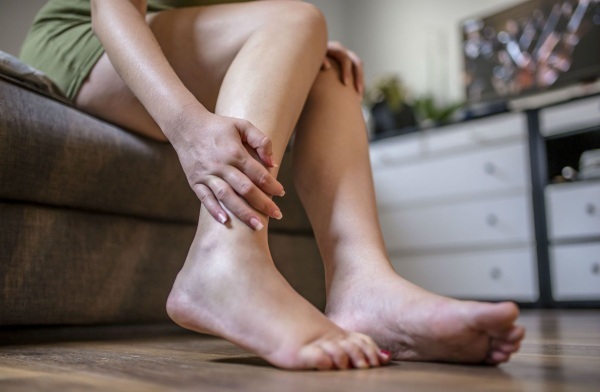
- Bone protruding through a cutaneous tear.
- Edema. The ankle after injury increases in volume, the contours of the ankle are smoothed out, and dents remain on the skin when pressed. Often, the edema spreads to the entire limb.
- Crepitation, crunch. During the injury, the victim feels a crunch, and subsequently, in the area of injury, a kind of crunchy sound, crepitus, appears on palpation.
- Hemorrhage. At the site of the injury, a hematoma appears, rapidly spreading along the ankle and moving down to the heel. Hemorrhage occurs with displaced fractures, when fragments of bone injure blood vessels.
- Ankle dysfunction. There is a limitation of mobility, the impossibility of loading the damaged part of the leg.
- Disturbed position of the foot. It can be tucked in or out. This occurs in the case of severe ankle injuries.
Reasons for the appearance
Ankle fracture (home rehabilitation after removal of the cast should be prescribed by a doctor) causes greater joint instability.
The reasons for the violation of the integrity of the ankle:
- twisting the ankle;
- falling;
- accidents;
- direct strong blows during a car accident;
- landing on an uneven surface;
- falls, stumbling;
- rolling on ice;
- leg injuries, including sports.
Sports are one of the most common causes of bimaleolar ankle fractures. Sometimes repeated soft tissue injuries, ligament tears, or weakening of supporting structures in older people or people with joint problems can also lead to ankle fracture.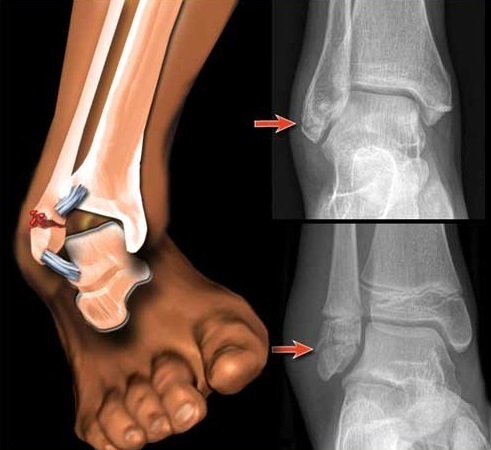
Avulsion fractures can occur anywhere on the body, but are most common at the ankle.
- They affect not only adults who go in for sports, but also children. They usually occur when a bone moves in one direction and a tendon or ligament suddenly stretches in the opposite direction. As a result of strong traction and with a sharp tension, a fragment of the bone is torn off at the place of attachment of the tendon.
Stress fractures can occur for the following reasons:
- People, especially athletes, with healthy bones often suffer such injuries when the calf muscles become tired when running long distances and lose elasticity.
- People who have very weak bones due to osteoporosis. The fracture of the foot can occur with fairly minor activities, such as brisk walking. This type of stress fracture is called a “failure fracture” because it occurs in a bone that does not have “sufficient” density or strength to withstand normal impact forces. Most often, the tibia, fibula, scaphoid bones are damaged.
Diagnostics
It is dangerous to treat a fracture at home, since there is a possibility of improper fusion of bone structures. Therefore, after an injury, you should immediately consult a doctor for examination and confirmation of the diagnosis of ankle fracture. In the future, rehabilitation measures can be carried out at home.
To make the correct diagnosis, the doctor prescribes an X-ray, which is carried out in 3 projections:
- Straight. The patient lies on his back and bends his leg at the knee.
- Lateral, The patient lies on one side, from the side of the affected leg, bends the knees, and the affected leg moves forward slightly.
- Oblique. The patient lies on his side on the side of the healthy leg, bends them and a pillow is placed between the legs.
After confirming the diagnosis, a treatment plan is drawn up, a conservative or operational technique is indicated.
If necessary, further examination is prescribed:
- Ultrasound of the ankle (the cost of the procedure is from 1 thousand. 300 rubles 2 thous. rub.).

- MRI (the price of the procedure is on average from 5 thousand. rub.).
- CT (procedure price from 2 thousand. RUB 500).
When to see a doctor
If acute pain occurs, hematomas should be directed to the emergency room at the nearest clinic. If it is impossible to determine the extent of the lesion, whether it was a bruise or a fracture, you should contact the trauma or surgical department. Fractures of the extremities are treated by orthopedists and surgeons.
In the course of treatment, it will be useful to visit a dietitian. Overweight people who are prone to osteoporosis are prone to frequent injuries in this part of the body. If the fracture is caused by increased fragility of the skeletal system, you should contact a gynecologist, rheumatologist and look for the causes of this phenomenon together with them.
Prophylaxis
Ankle fracture (home rehabilitation will take a long time) cannot be prevented.
But it is possible to take some measures:
- Wear suitable footwear that supports your ankle, especially when playing sports.
- Exercise regularly to maintain strength and fitness.
- Use lights at home at night.
- Use anti-slip mats in the shower and bathroom.
- To prevent osteoporosis, you should maintain normal weight, balance your diet, prevent falls, and for this you should do special exercises to develop balance.
Rehabilitation
One of the indispensable conditions for the treatment and rehabilitation of patients with impaired integrity of the ankle joint is an anatomically accurate restoration of bone structures and the subsequent restoration of motor functions. Healing in this part of the body occurs within 6 weeks. Ligaments or other soft tissues may take longer to heal.
After removing the plaster cast, rehabilitation measures are required to restore the motor activity of the lower limb. Due to prolonged immobility of the limb under the plaster cast, there is a decrease in the tone of the articular tissue and muscle. Without special exercises, the fracture later leads to lameness.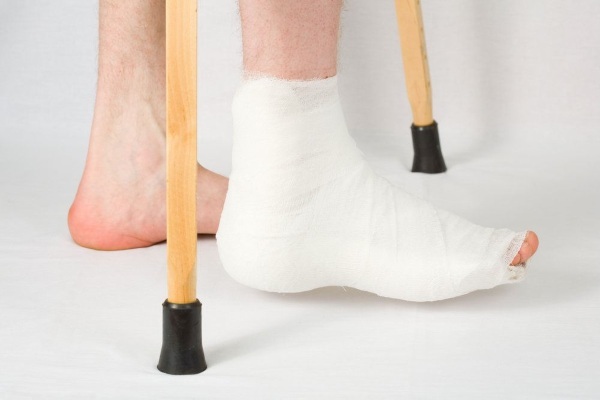
All rehabilitation measures are prescribed individually for each patient.
But there are general recommendations:
- Physiotherapy procedures.
- Therapeutic exercises for the development of joints.
- Massage sessions.
- Calcium diet.
Schedule
Ankle fracture (home rehabilitation will be more successful if done in conjunction with relatives) is a complex injury, therefore activity and intensity of movement should be restored gradually.
You can start exercises in the morning after waking up. In this case, do not lower the leg, but keep it near the body to reduce swelling. First, knead the muscles along the injured area on the leg. Then do stretching exercises: flexion and extension until the first painful sensations. After that, twisting exercises are performed.
To do this, the lower leg and foot must rotate. Rest your leg after exercise. Each action takes 8-10 seconds, followed by 6 seconds of relaxation. Such a complex is done 3-4 times a day for 10-15 minutes. Gradually, the exercises become more difficult and the time allotted for them increases.
Physical activity during the day should be in the ratio: 30/30. Move for half an hour, 30 minutes. rest while sitting. During the day, you can massage your leg, take foot baths, lotions. It is possible to do household activities during this period. This should be done while sitting with the injured leg on a separate chair.
You need to rest 3-4 times a day during the day. To do this, you should lie on one side and it is better to use a roller placed between your thighs.
In addition to therapeutic restorative exercises, at the subsequent stages, you should take walks every day on foot, it is better if the patient will be accompanied by someone for the first time.
Initial walks should be short, with long rest stops, but preferably daily. Walking up and down stairs helps to develop the leg well. You may need crutches or a cane to get started.
If there is a support bandage on your leg, it should be removed at night.
Medications
Patients with various types of ankle injuries, first of all, are offered the introduction of pain medications:
| Types of pain relief depending on the nature of the injury | What is it for? Place of introduction | Drugs |
| Local | Suggested for closed fractures. It is inserted into the ankle cavity closer to the external ankle or directly into the hematoma. |
0.5-1% solution of novocaine, 20-40 ml |
| Intraosseous | It is used to relax the triceps muscle, it is done with closed fractures of both ankles, when there is a separation of the posterior edge of the lower epiphysis of the tibia, the fracture is accompanied by subluxation feet | 100-120 ml of 0.5% novocaine solution is injected into the heel area |
| General | With a large amount of surgical intervention | General anesthesia |
After an injury, you should not take painkillers on your own for 24 hours, such as Nurofen, Naproxen, Ibuprofen. They increase the risk of bleeding. The safest drug is Tylenol.
For anesthesia after removing the plaster during the rehabilitation period, you can use ointments:
- Lidocaine
- Ketonal and Ketanov
- Diclofenac
- Nise, Nurofen.
- Anesthetic ointment.
To relieve puffiness:
- Heparin ointment
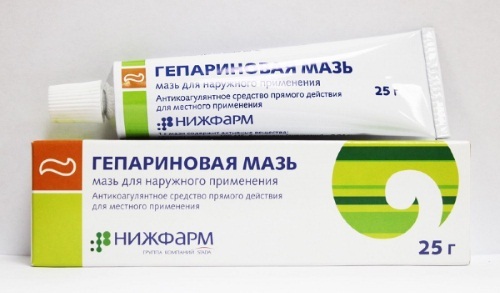
- Troxevasin.
- Lyoton.
Calcium preparations accelerate bone fusion:
- Calcium D3 Nycomed, price from 500 rubles.
- Complivit Calcium D3 Forte, price from 350 rubles.
- Calcium Chelate, price from 700 rubles.
- NATURE'S WAY, CALCIUM CITRATE, the best monopreparation of calcium, price from 900 rubles.
- Calcium Active, price from 190 rubles.
Traditional methods
To relieve swelling, reduce pain, you can do lotions:
-
Cold compress. Wrap 2-3 ice cubes in a clean cloth. Apply ice to the affected area for 10 minutes. Repeat 3-4 times a day for best results. You can rub an ice cube on the affected area for 5-10 minutes to relieve pain and swelling.

- Mustard oil. It has anti-inflammatory and firming properties. Massage the leg with heated oil for 5 minutes. Repeat the procedure 2-3 times a day for faster healing.
- Turmeric possesses medicinal and anti-inflammatory properties. Mix the grated onion with 2 tsp. l. mustard oil and 1 tsp. l. turmeric. Make a smooth paste and heat the mixture for 15-20 minutes. Apply the mixture to the affected area and then wrap it in a cotton cloth.
To restore strength and range of motion, you can carry out exercises:
- Ankle stretch: stretch out the injured leg and wrap a towel around the arch of the foot. Holding it by the ends, pull the towel towards you. This should feel a gentle stretch on the top of the foot and ankle. Keep your leg straight, holding in this position for 15-30 seconds. Repeat three times.
- Ankle rotation: sit on a chair and put your ankle on the opposite knee. Press the leg down and twist gently to reduce the stiffness of the joint.
- Ankle flexibility: sit on a chair and stretch out the injured leg. Use your thumb to write the alphabet, thereby developing flexibility.
Milk drink with the addition of turmeric has medicinal and anti-inflammatory properties. To do this, add ¼ h. l. turmeric in warm milk and drink at least twice a day. It reduces pain and also helps in bone healing.
Other methods
After removing the plaster, it is not recommended to immediately start exercise therapy. Initially, you should conduct a course of physiotherapy, combining them later with massage actions. The start of the procedure is determined by the doctor based on the complexity of the fracture.
Patients are recommended:
- warming up;
- mud and paraffin applications:
- electrophoresis;
- sessions with exposure to low frequency currents;
- ultraviolet irradiation;
- ultrasound sessions.
After the end of the physiotherapy sessions, physiotherapy sessions are prescribed.
Possible complications
Complications are sometimes observed after treatment of fresh and old injuries in the ankle area.
These include:
- Secondary displacement of fragments. More often occurs after 2 weeks of treatment, but possibly after 2 months after the injury. It occurs due to poor fixation of the limb, removal of the plaster cast ahead of time, increased load on the injured leg.
- Prolonged nonunion of ligaments, bone fragments. It occurs due to improper treatment, poor-quality plaster immobilization, early load on the leg.
- Improper fusion of bone, bone fragments. This is also influenced by early loading, improper or early removal of the plaster cast, refusal to wear orthopedic shoes.
- Complications associated with mistakes made during the operation.
- Pseudoarthrosis. The formation of callus between fragments can occur during the period of bone tissue repair. This complication occurs less frequently with closed fractures than with open ones. Pseudoarthrosis occurs on the border of the lower part of the tibia.
- Flat feet. Under the influence of trauma, deformation of the arch of the foot can occur when the entire plantar region is flattened and adjoined to the floor.
- The development of deforming arthrosis. This happens after a serious injury, when mistakes were made at all stages of treatment.
- Soft tissue necrosis. The process occurs more often in elderly patients, when cellular nutrition, blood outflow is disturbed. All of this affects the healing process.
Complications after surgical treatment are possible:
- sepsis;
- abscess;
- thrombophlebitis;
- osteomyelitis.
In cases of complications that have arisen, therapeutic treatment should be continued, special attention should be paid to preventive measures.
Ankle fracture is considered difficult in medical practice to diagnose and treat. In order to prevent a serious complication - deforming arthrosis - you should carefully listen to the advice of a doctor. Perform all therapeutic measures, correctly and efficiently carry out rehabilitation at home.
Ankle fracture video
Ankle injuries. Ankle fracture:


